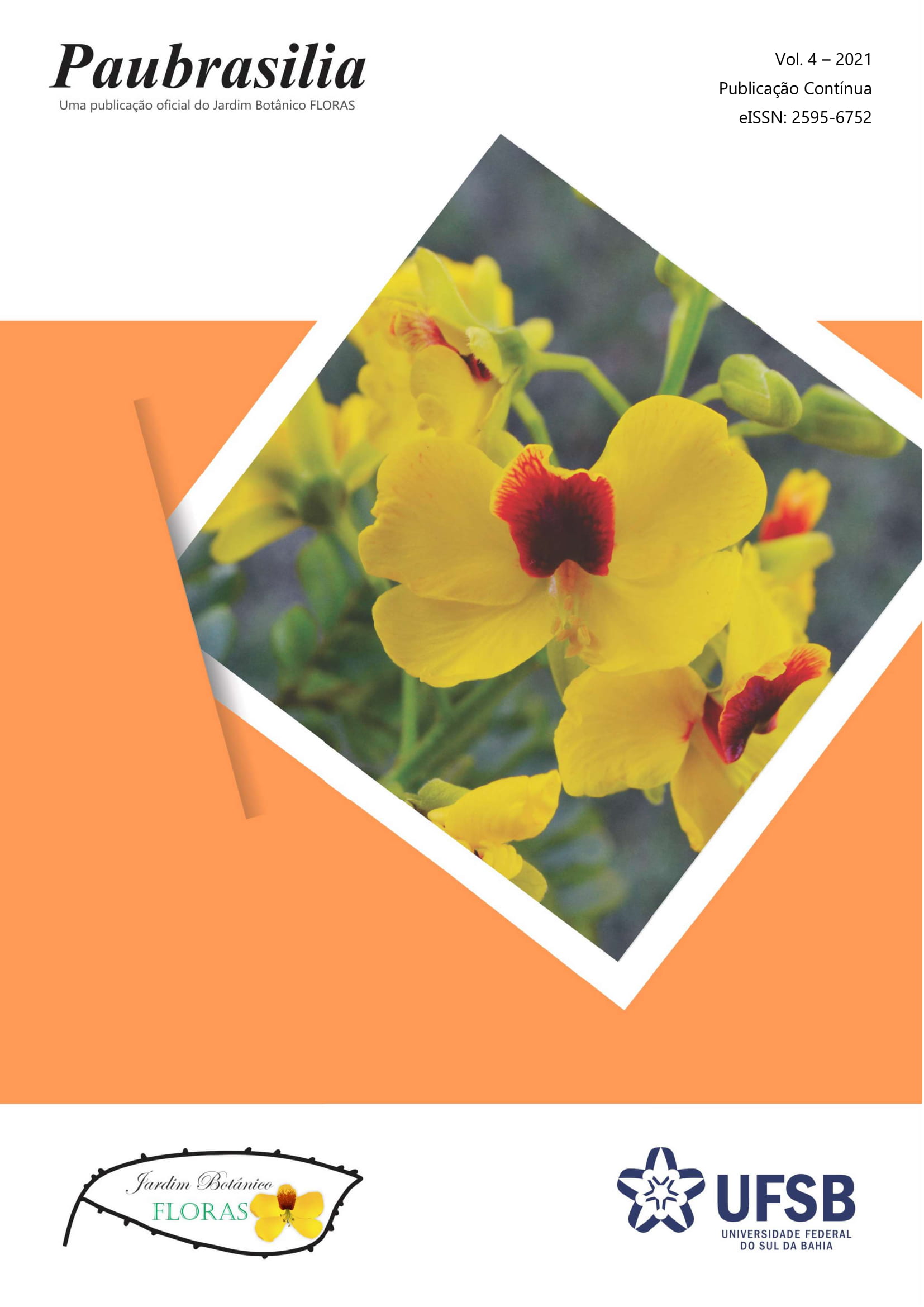Richness and distribution of Fabaceae Lindl. in the sandy coastal plain of Jurubatiba Sandbank National Park
DOI:
https://doi.org/10.33447/paubrasilia.2021.e0071Keywords:
restingas of the State of Rio de Janeiro, Atlantic Forest, coastal zone, vegetation mosaic, conservationAbstract
The restingas in the state of Rio de Janeiro are characterized by a high diversity of habitats and floristic wealth. The Jurubatiba Sandbank National Park (JSNP) stands out as the largest remaining restinga in Brazil, and has 10 different plant communities. This work aims to present the updated floristic list of Fabaceae at the JSNP, and also to analyze and discuss the distribution of species by the existing phytophysiognomy. 56 species and one variety, subordinate to 33 Fabaceae genera were registered in the JSNP, which is equivalent to about 36% of the species, and 51% of the genera mentioned for the restingas of Rio de Janeiro. The results indicate the importance of Fabaceae in the floristic composition of the JSNP, with representation in eight of the plant communities. The forest of sandy cord is the phytophysiognomy with the greatest wealth (24 species). The arboreal habit is the most frequent among the registered species, and only three species have a wide distribution in the PNRJ phytophysiognomies.
Downloads
Published
How to Cite
Conference Proceedings Volume
Section
License
Copyright (c) 2021 Marcelo Fraga Castilhori, Cátia Henriques Callado, Haroldo Cavalcante de Lima

This work is licensed under a Creative Commons Attribution 4.0 International License.
By submitting manuscripts for publication in the journal, authors expressly agree to the following terms:
1 - Authors retain copyright on their manuscript and grant the right of first publication to the journal, with the work simultaneously licensed under the Creative Commons Attribution 4.0 International License, allowing it to be shared, as long as authorship and initial publication in Paubrasilia are acknowledged, with proper indication of volume, number (if any), page number (or elocation-id), and year in which the paper was published;
2 - Authors are allowed to enter into additional contracts separately, for non-exclusive distribution of the version of the paper published in Paubrasilia (e.g., publishing in an institutional repository or as a book chapter), provided that authorship and initial publication in this journal are acknowledged, with proper indication of volume, number (if any), page number (or elocation-id), and year in which the paper was published.











